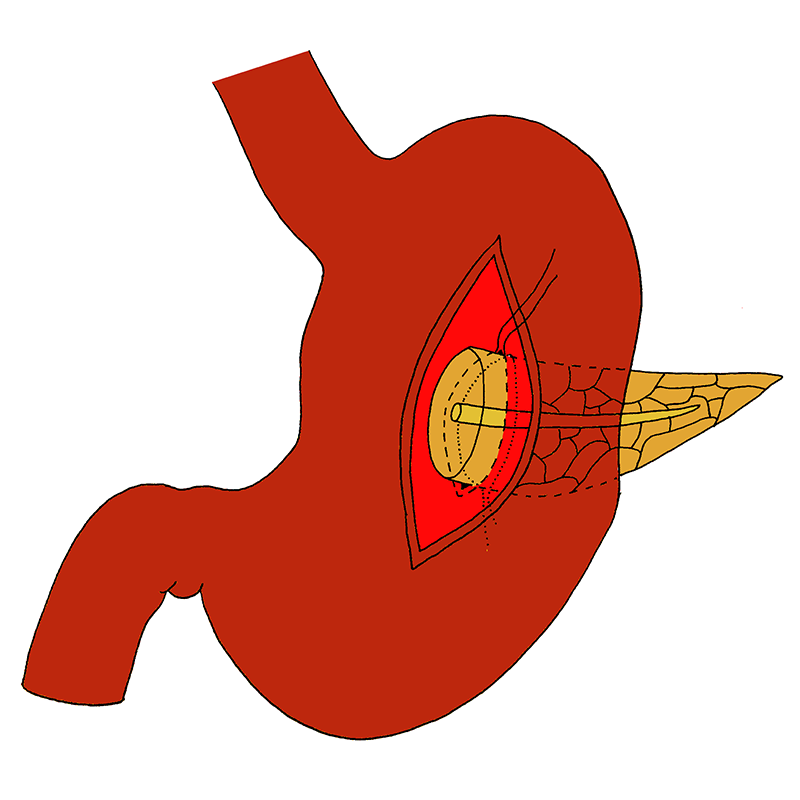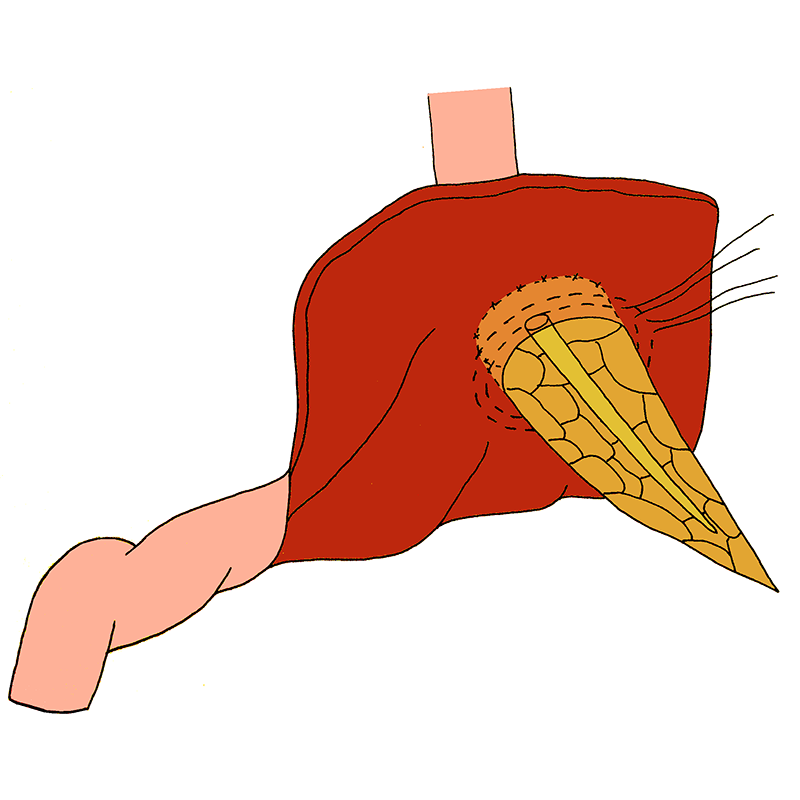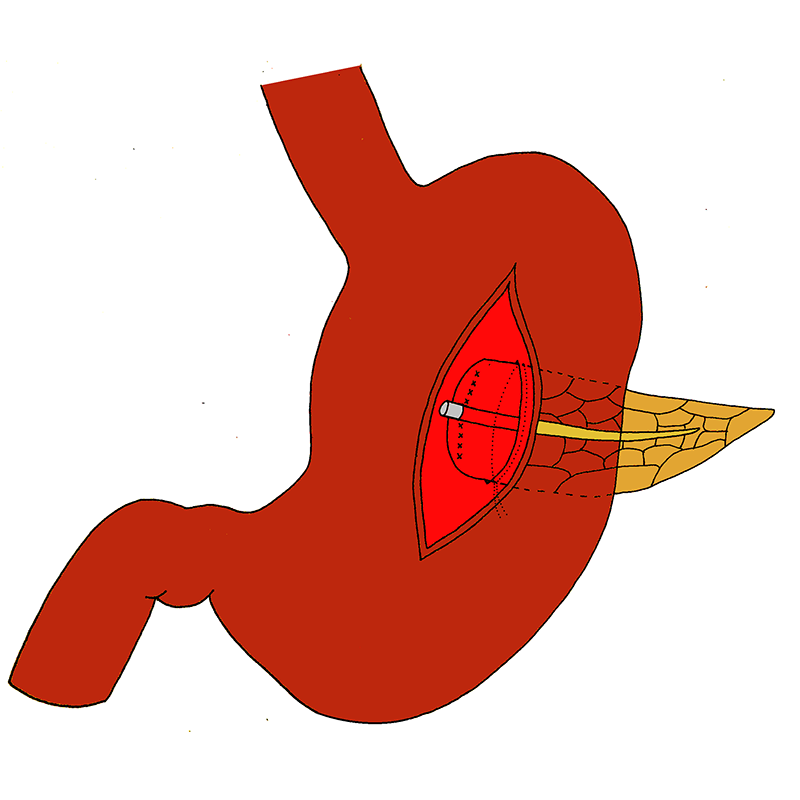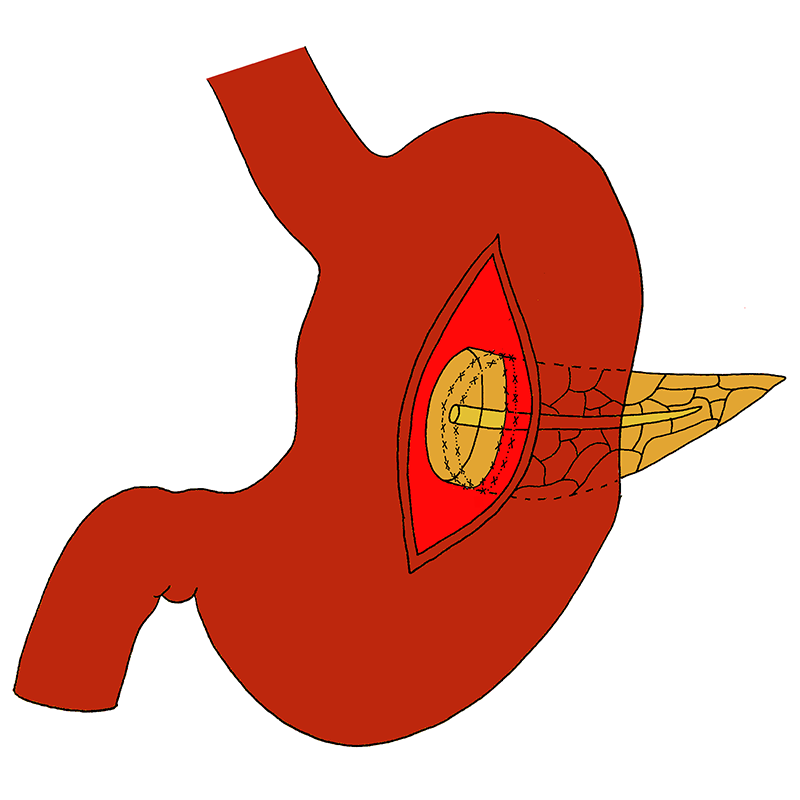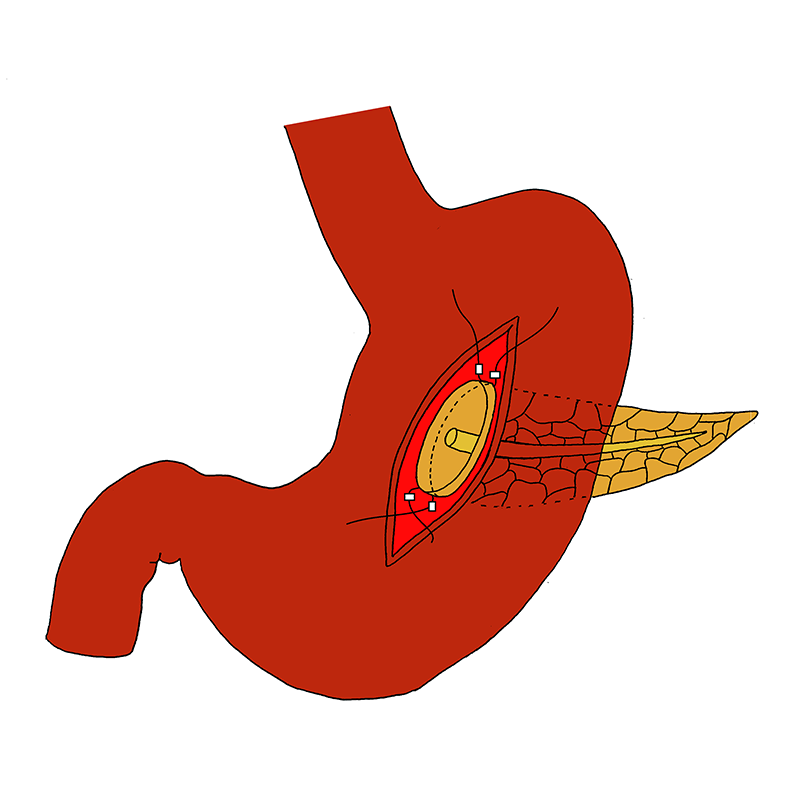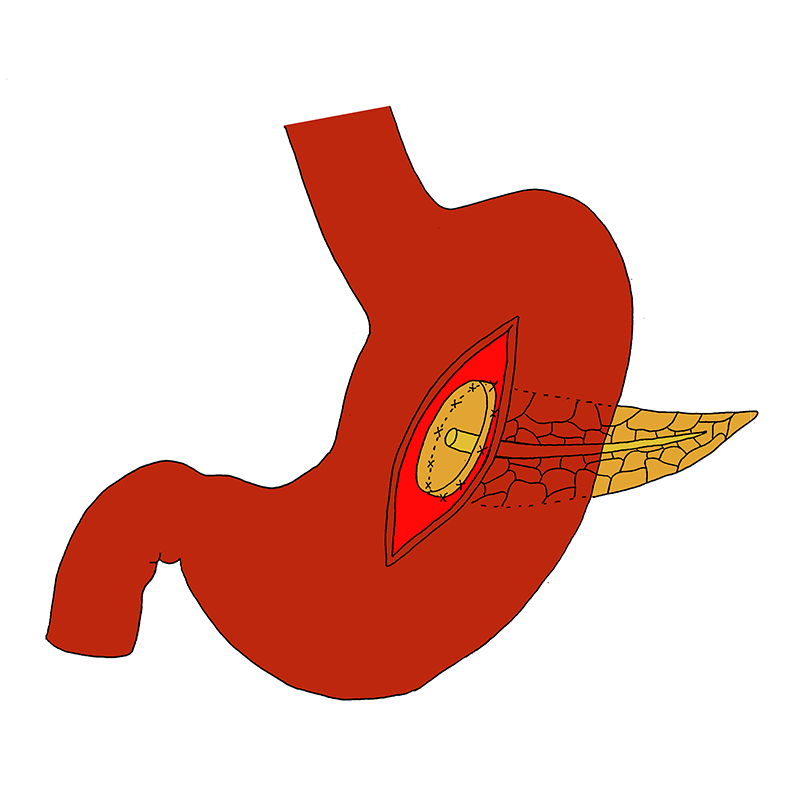Using two hemstitch sutures
A seromuscular incision is made in the posterior wall of the stomach, with a size similar to the diameter of the pancreatic stump; the mucosa is remained intact at first. The first hemstitch suture is applied in the seromuscular layer of the gastric wall around the seromuscular incision. […]


